Abstract
Nitrate reduction in roots and shoots of 7-day-old barley seedlings, and 9-day-old corn seedlings was investigated. The N-depleted seedlings were transferred for 24 h or 48 h of continuous light to a mixed nitrogen medium containing both nitrate and ammonium. Total nitrate reduction was determined by 15N incorporation from 15NO3−, translocation of reduced 15N from the roots to the shoots was estimated with reduced 15N from 15NH4+ assimilation as tracer, and the translocation from the shoots to the roots was measured on plants grown with a split root system. A model was proposed to calculate the nitrate reduction by roots from these data. For both species, the induction phase was characterized by a high contribution of the roots which accounted for 65% of the whole plant nitrate reduction in barley, and for 70% in corn. However, during the second period of the experiment, once this induction process was finished, roots only accounted for 20% of the whole plant nitrate reduction in barley seedlings, and for 27% in corn. This reversal in nitrate reduction localization was due to both increased shoot reduction and decreased root reduction. The pattern of N exchanges between the organs showed that the cycling of reduced N through the plant was important for both species. In particular, the downward transport of reduced N increased while nitrate assimilation in roots decreased. As a result, when induction was achieved, the N feeding of the roots appeared to be highly dependent on translocation from the leaves.
Full text
PDF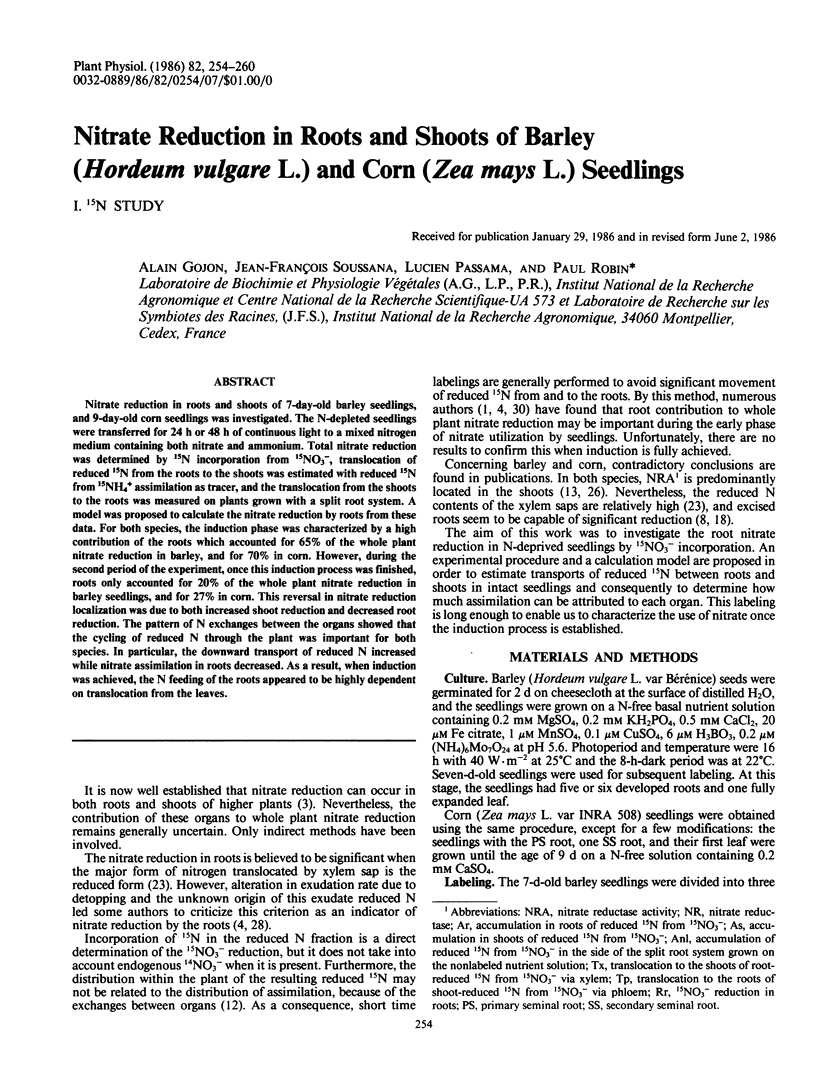
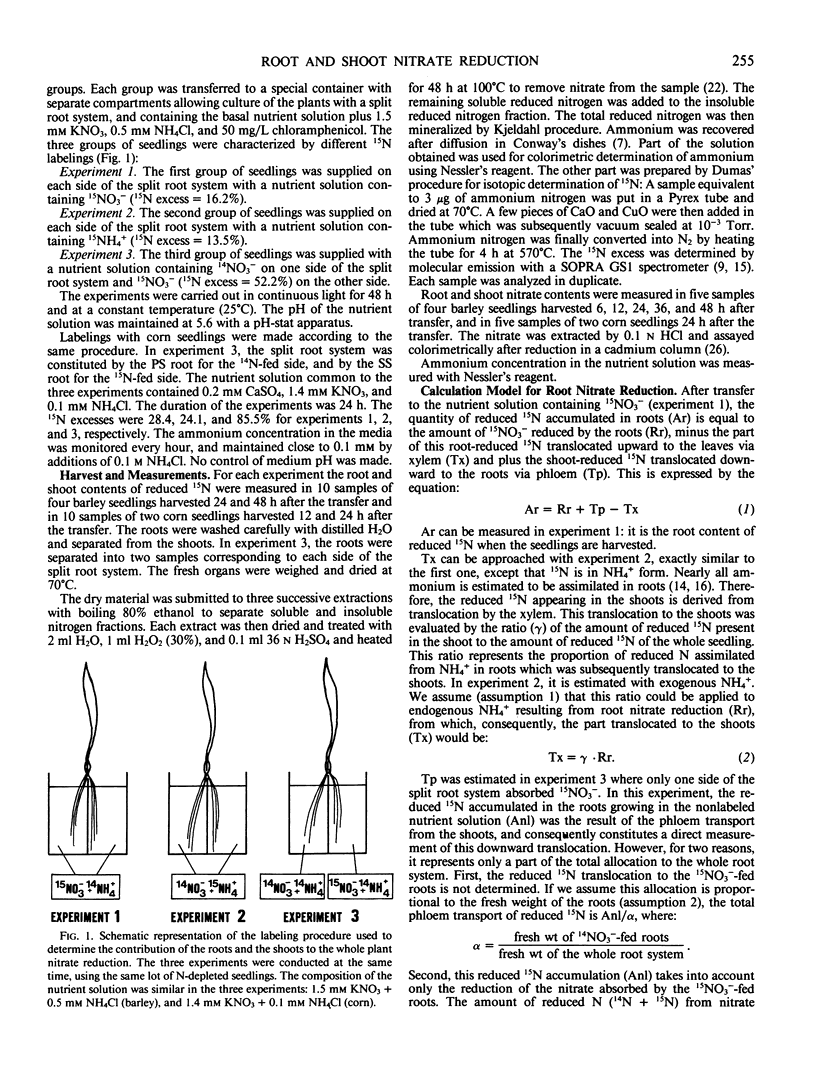
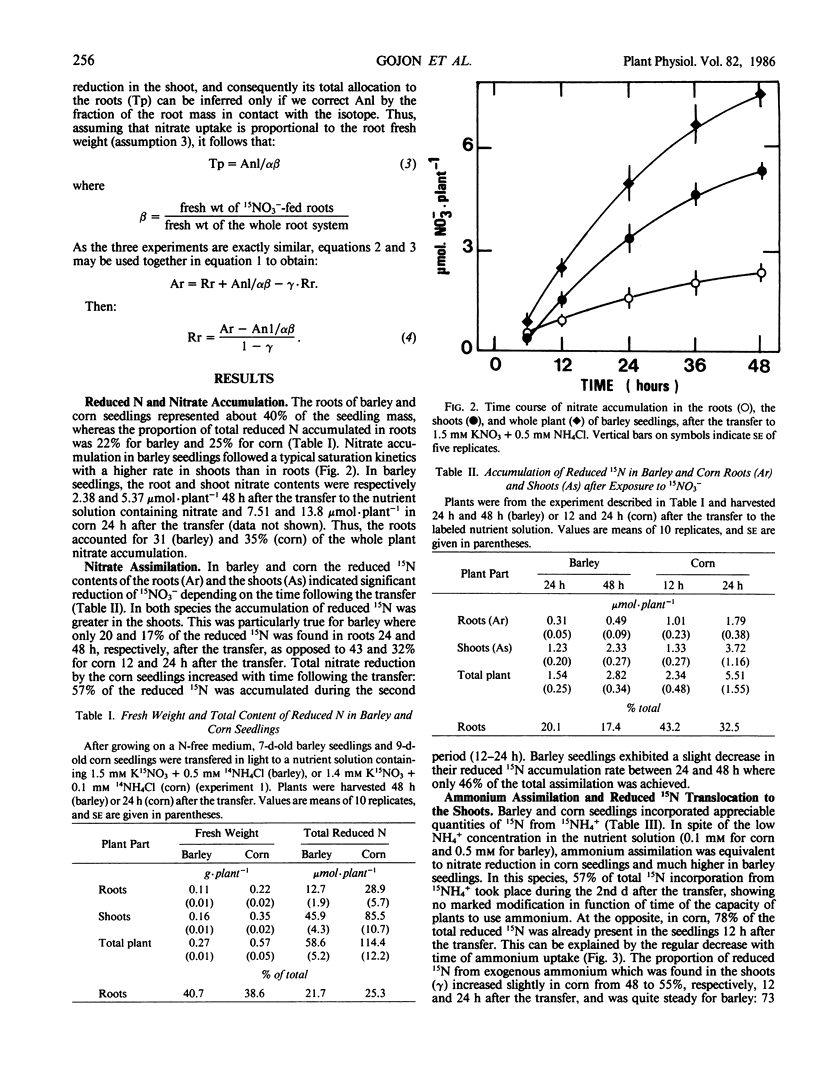
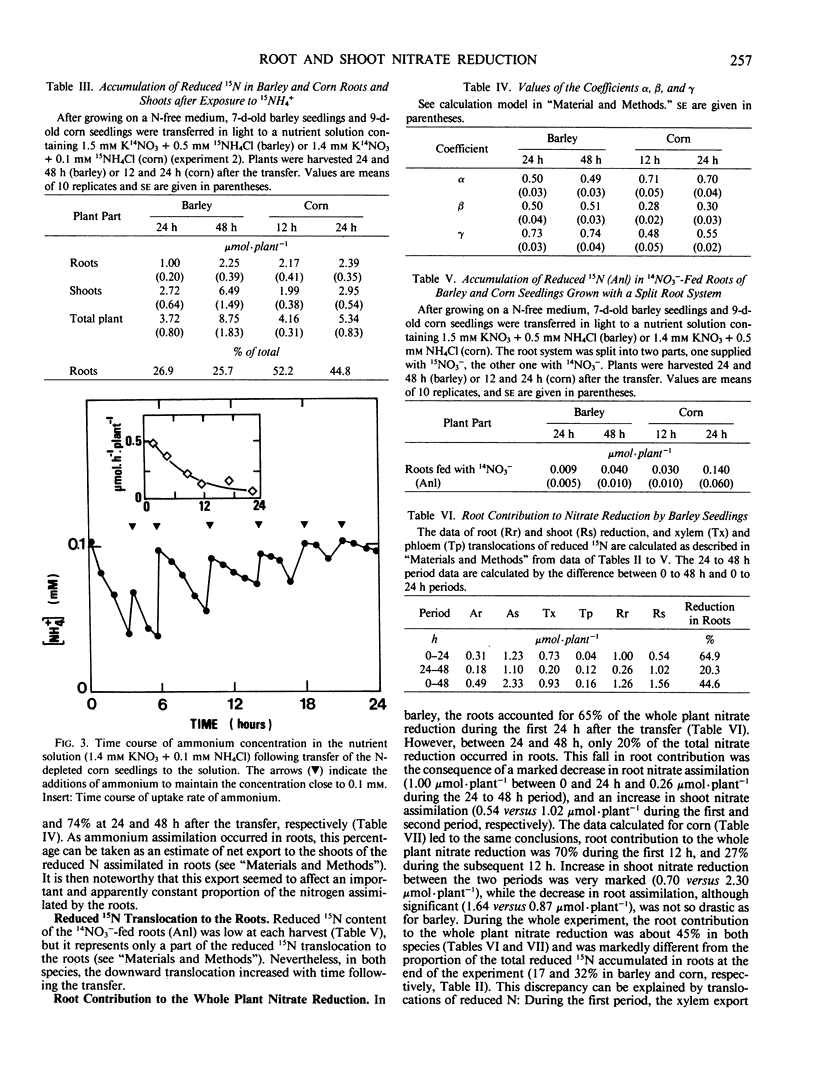

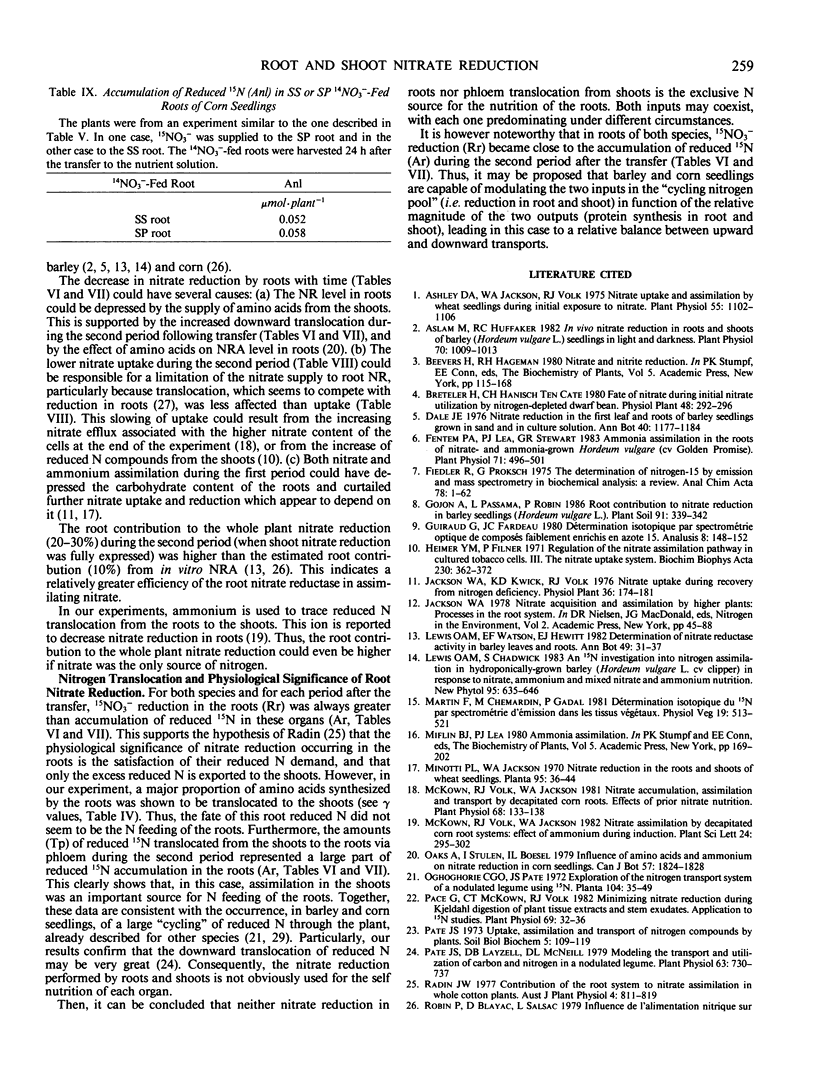

Selected References
These references are in PubMed. This may not be the complete list of references from this article.
- Ashley D. A., Jackson W. A., Volk R. J. Nitrate Uptake and Assimilation by Wheat Seedlings during Initial Exposure to Nitrate. Plant Physiol. 1975 Jun;55(6):1102–1106. doi: 10.1104/pp.55.6.1102. [DOI] [PMC free article] [PubMed] [Google Scholar]
- Aslam M., Huffaker R. C. In Vivo Nitrate Reduction in Roots and Shoots of Barley (Hordeum vulgare L.) Seedlings in Light and Darkness. Plant Physiol. 1982 Oct;70(4):1009–1013. doi: 10.1104/pp.70.4.1009. [DOI] [PMC free article] [PubMed] [Google Scholar]
- Fentem P. A., Lea P. J., Stewart G. R. Ammonia Assimilation in the Roots of Nitrate- and Ammonia-Grown Hordeum Vulgare (cv Golden Promise). Plant Physiol. 1983 Mar;71(3):496–501. doi: 10.1104/pp.71.3.496. [DOI] [PMC free article] [PubMed] [Google Scholar]
- Heimer Y. M., Filner P. Regulation of the nitrate assimilation pathway in cultured tobacco cells. 3. The nitrate uptake system. Biochim Biophys Acta. 1971 Feb 23;230(2):362–372. doi: 10.1016/0304-4165(71)90223-6. [DOI] [PubMed] [Google Scholar]
- Mackown C. T., Volk R. J., Jackson W. A. Nitrate Accumulation, Assimilation, and Transport by Decapitated Corn Roots : EFFECTS OF PRIOR NITRATE NUTRITION. Plant Physiol. 1981 Jul;68(1):133–138. doi: 10.1104/pp.68.1.133. [DOI] [PMC free article] [PubMed] [Google Scholar]
- Pace G. M., Mackown C. T., Volk R. J. Minimizing Nitrate Reduction during Kjeldahl Digestion of Plant Tissue Extracts and Stem Exudates : APPLICATION TO N STUDIES. Plant Physiol. 1982 Jan;69(1):32–36. doi: 10.1104/pp.69.1.32. [DOI] [PMC free article] [PubMed] [Google Scholar]
- Pate J. S., Layzell D. B., McNeil D. L. Modeling the transport and utilization of carbon and nitrogen in a nodulated legume. Plant Physiol. 1979 Apr;63(4):730–737. doi: 10.1104/pp.63.4.730. [DOI] [PMC free article] [PubMed] [Google Scholar]
- Rufty T. W., Jackson W. A., Raper C. D. Nitrate Reduction in Roots as Affected by the Presence of Potassium and by Flux of Nitrate through the Roots. Plant Physiol. 1981 Sep;68(3):605–609. doi: 10.1104/pp.68.3.605. [DOI] [PMC free article] [PubMed] [Google Scholar]
- Rufty T. W., Volk R. J., McClure P. R., Israel D. W., Raper C. D. Relative Content of NO(3) and Reduced N in Xylem Exudate as an Indicator of Root Reduction of Concurrently Absorbed NO(3). Plant Physiol. 1982 Jan;69(1):166–170. doi: 10.1104/pp.69.1.166. [DOI] [PMC free article] [PubMed] [Google Scholar]


